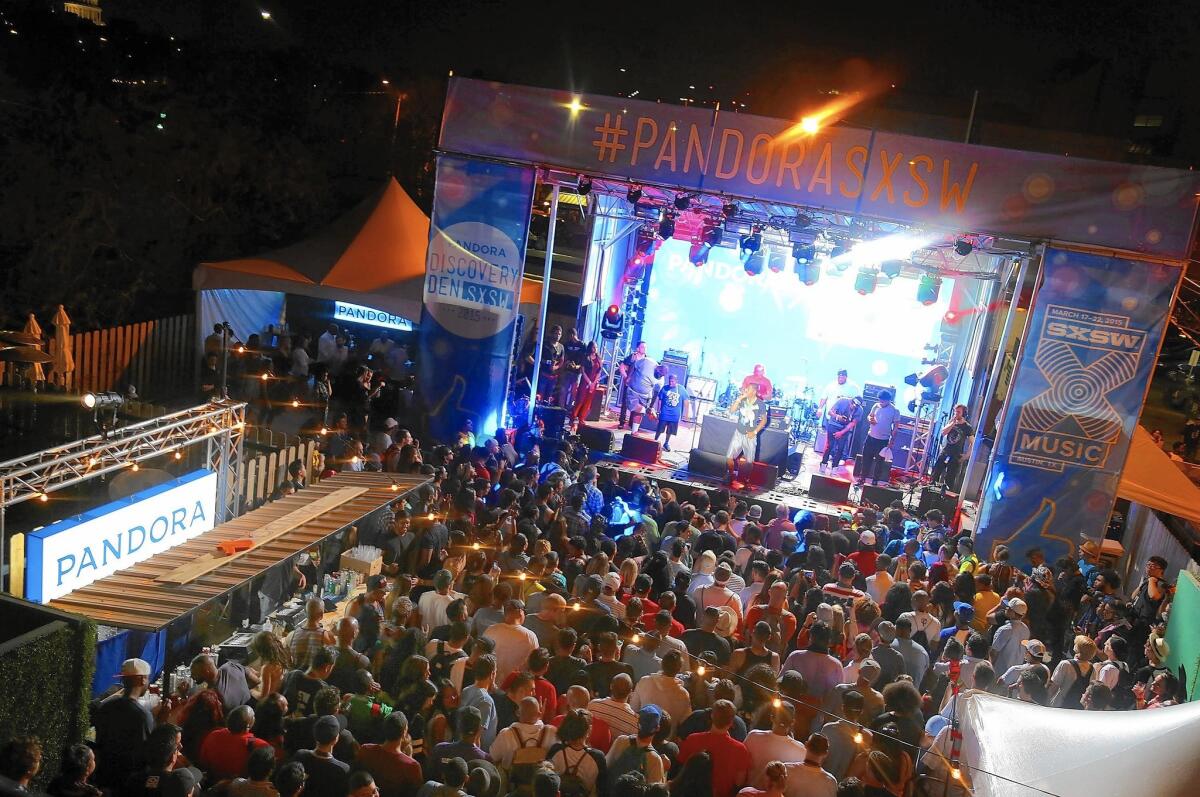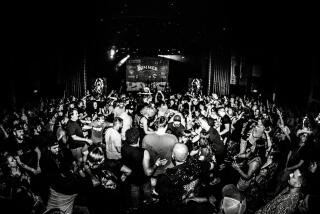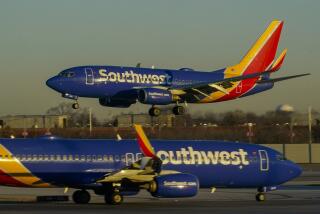SXSW 2015: The festival changes, but for the better?

Reporting from Austin, Texas — A prevailing notion at the South by Southwest music festival, which concluded here Sunday, was that this year’s edition delivered a much-needed course correction.
Having spent the better part of a week trudging around downtown Austin — from concerts to parties to panel discussions — I agree that SXSW has changed. But I’m not so sure the shift is putting better music in front of more listeners — or making the music stick.
Though it began in 1987 as a low-key showcase for regional talent, the festival had ballooned in recent years, attracting superstar acts such as Green Day and Prince, eager to borrow SXSW’s cool factor in promoting new product or rehabilitating an image. As usual, corporate brands weren’t far behind, which is how Lady Gaga ended up performing last year in front of a giant Doritos logo.
FULL COVERAGE: South by Southwest
Yet this year, some of the biggest sponsors (including Citi and iTunes) stayed away, a reaction perhaps to the widespread perception that SXSW had lost its edge. Some corporations might also have been distancing themselves after a fatal 2014 incident in which a driver fleeing police plowed into a festival crowd and four people died.
Either way, fewer brands led to fewer boldface names — with the notable exception of Snoop Dogg, who delivered the festival’s keynote address — and that cleared the way for a reemphasis on emerging talent.
“It improves the signal-to-noise ratio,” said Jason Bentley, music director of Santa Monica’s KCRW-FM, which presented a concert in Austin featuring young acts such as James Bay and Milky Chance.
Bentley meant that, minus the distractions of a Kanye West or a Kendrick Lamar (both of whom were rumored to appear but didn’t), attendees could more easily focus on what SXSW was founded to do. That idea was echoed by Simon Fleming-Wood, who oversees marketing at Pandora, the digital streaming service.
“Our goal here is not to find the largest artist we can and have them play an event so our house will be packed,” he said, referring to Pandora’s so-called Discovery Den, which hosted performances by the rock band Palma Violets and the hip-hop group Migos, among others.
“We’ve turned down major artists. Our approach is to say, ‘Look, this is a place where we can celebrate the up-and-coming talent that people are going to want to hear.’”
SXSW may have been celebrating talents that were smaller in scale, but they were still abundant in number. As in 2014, more than 2,000 acts were estimated to have descended on Austin, which put a strain on even the most committed.
On Friday afternoon, as a rainstorm soaked the streets of downtown, a performance space sponsored by Google had the members of an unknown roots-rock band pouring their hearts out to a nearly empty room.
And this was at a moment when passersby had a clear incentive to step inside.
Bethany Cosentino of L.A.’s Best Coast, which came to SXSW to drum up interest ahead of a coming major-label album, said so much was happening — even without the Doritos #BoldStage looming over Red River Street — that it was hard to gauge what effect a performance here might have on a young band’s career.
“It’s very bizarre that there’s this idea that you’ll come to South by Southwest and leave with a record deal,” she said. “I don’t know who that’s happening to.”
So was it all a well-intentioned waste? Despite (or perhaps because of) the fact that this year’s festival felt troublingly diffuse, without any center to hold onto, artists repeatedly wowed doing intensely personal work, as though the broader turn from extravagance had inspired an embrace of introspection.
Hunched over a piano at Austin’s Central Presbyterian Church (just one of many unconventional venues pressed into temporary service during SXSW), Tobias Jesso Jr. sang beautifully about heartbreak and disillusionment in songs from his delicate but knowing new album, “Goon.”
Rapper J. Cole gave self-examination an anthemic thrust in a blistering theater set that he said served as a preview of his summer arena tour.
“I’m so sorry that I left you there to deal with that alone,” he growled in “Apparently,” about how he was living the high life as a college student in New York while his mother’s house was being foreclosed back in his native North Carolina.
Two music-related documentaries were held over from the earlier SXSW film festival: “Kurt Cobain: Montage of Heck,” Brett Morgen’s vivid, sometimes disturbing portrait of the late Nirvana frontman, and “All Things Must Pass,” a surprisingly touching account of the rise and fall of Tower Records directed by actor Colin Hanks.
Speaking about the technological shifts that his movie both describes and has benefited from (in the form of cheap cameras and streaming-video distribution), Hanks said, “The gates have opened. You can go make a movie. You can go make a documentary.”
And, more easily than ever, you can go make a song and play it for people. But this year, SXSW offered a reminder of what’s still as hard as ever: getting people to care.
We’re at South by Southwest until March 22. Join us at latimes.com/sxsw for ongoing coverage of the festival.
More to Read
The biggest entertainment stories
Get our big stories about Hollywood, film, television, music, arts, culture and more right in your inbox as soon as they publish.
You may occasionally receive promotional content from the Los Angeles Times.











